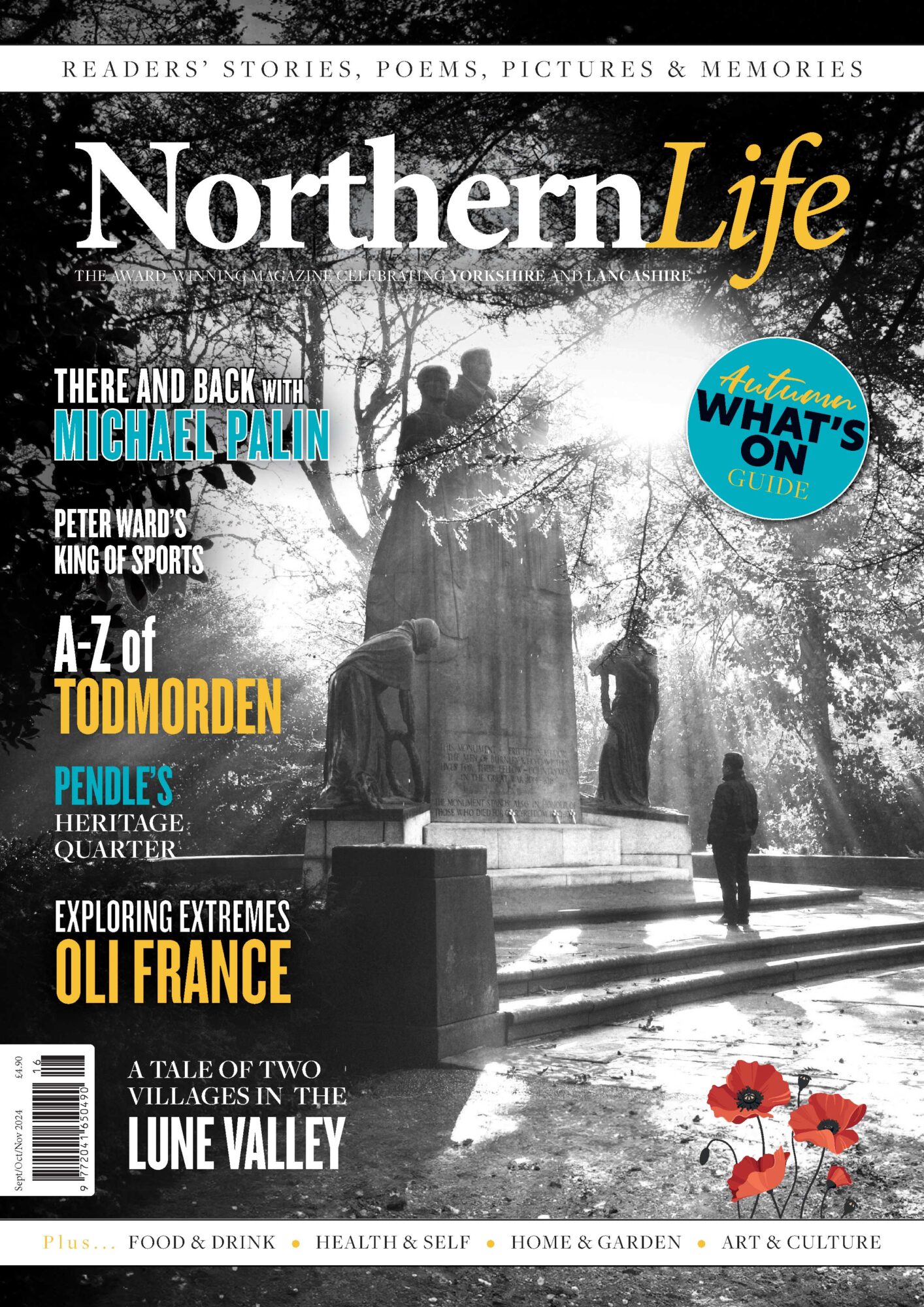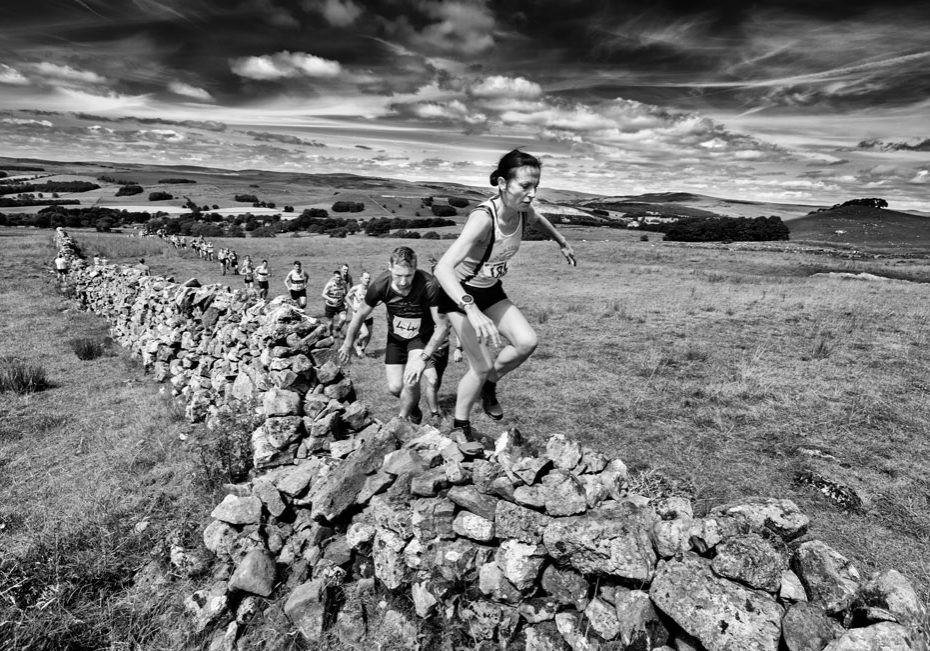
Run the Dales
by Victoria Benn
Harnessing the beauty of the Dales, new website and photographic exhibition, Run the Dales brings to life the sport of fell running like never before…
There’s not many sports and hobbies that lend themselves to ‘the new abnormal’ of social distancing, but fell running along with the likes of golf, horse riding and white water rafting –thankfully does. Yet, unlike golf or horse riding, fell running kit is as cheap as its gets, with a good pair of running shoes being all that’s required to get started. Perfect for those with short arms and deep pockets.
The other notable thing about fell running is that as sports go, it is one of the oldest and most traditional, with the first recorded race dating back to 1040. And, despite long being popular throughout Lake District, Cheviot Hills and Scotland, it is the Yorkshire Dales that can lay claim to some of the oldest organised fell races in the history books, with the fell races at Lothersdale near Colne and Burnsall in Wharfedale dating back to 1847 and 1850, respectively.

The beauty of fell running (as opposed to other types of running) is that just one race can bring together many unique challenges; from soft, muddy and boggy moorlands to rocky, rugged and sheer fell sides, to climbing walls and stiles – all of which test strength, flexibility, coordination and balance, in addition to running ability. The other important feature is that most races – especially those organised by the British Open Fell Runners Association (BOFRA), are open to all, which effectively means that anyone from any background or gender age from Under 9 to 90 can tip up and run.
Celebrating and promoting this particularly northern tradition is a new website aptly entitled, Run the Dales (www.runthedales.org.uk) which has been made possible by grants from the Yorkshire Dales National Park Authority’s Sustainable Development Fund and Great Place: Lakes and Dales. With input from current record holders, along with former British and international fell and mountain running champions such as Victoria Wilkinson, Kirsty Hall, Robb Jebb and Stephen Hawkins, the website is a ‘one stop site’ for all the practical things you need to know to get started in the sport. Sections include information on training – inclusive of demonstration videos – and running clubs, to how to find races, topped off with a fascinating insight into the long and tenacious heritage of the sport. You can even listen to specially commissioned audio clips from some of the UK’s greatest champions, divulging the stories behind their hardest won races.
Sharing the story behind his unbroken record win at one of the most spectacular fell races of all, the Kilnsey Crag race, is Commonwealth Games finalist, Michael Hawkins:
“The Kilnsey Crag Race is iconic because of the crowds. It’s like being in your own mini Olympics. There’s not many races where the crowd are on top of you like that. Back in the1970s and 1980s there were crowds of 18 – 20 thousand – so it was really inspirational.
“I won it the first time in 1982 which is when I broke the record –which still stands to this day. That was the first season I trained fulltime. I trained every day and started upping my mileage and reading books about training.
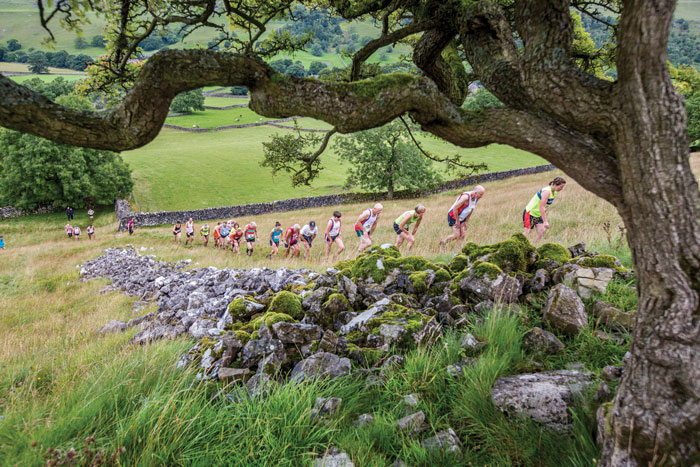

After that I won the race twice more – in 1983 and 1984 before I turned amateur. I’d decided to do road running and track running and made the European Indoor 3000mfinal in 1988 – I was fourth in that and then I also competed in the Commonwealth Games Steeplechase in 1990 in Auckland where I reached the final. So basically I ended uprunning for England and Great Britain 27 times and it all started with Kilnsey Crag Race – it did seriously.”
Also bringing the inspirational content of Run the Dales to life is the breath taking imagery of award-winning photographer, Stephen Garnett. A familiar face at many of the Dales’ fell races, Stephen who is often to be found up the fell himself, is well known for his creative and imaginative imagery.
“It takes a bit of effort, but I learnt early on in my career that the best photographs are those taken away from the start line,” says Stephen.
“Exploring the route ahead always reaps rewards, be that an unexpected field of buttercups or a gnarled old hawthorn transforming a simple shot into a perfectly framed picture. I also like to capture the lung busting rawness of fell running. People are not just pitting themselves against the hills and mountains, but often against some of the Dales most horrendous weather.”
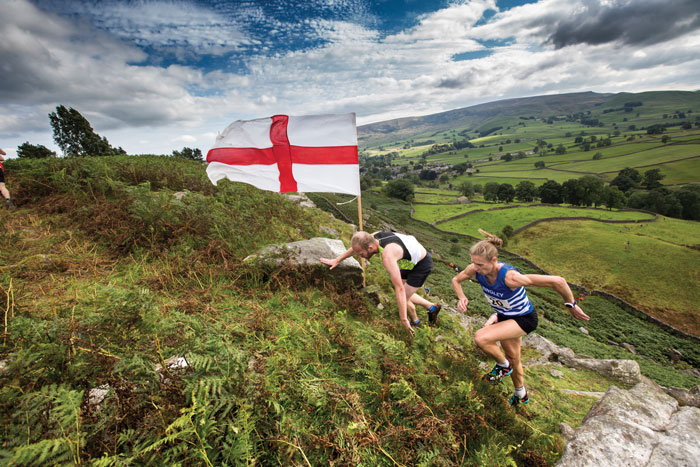
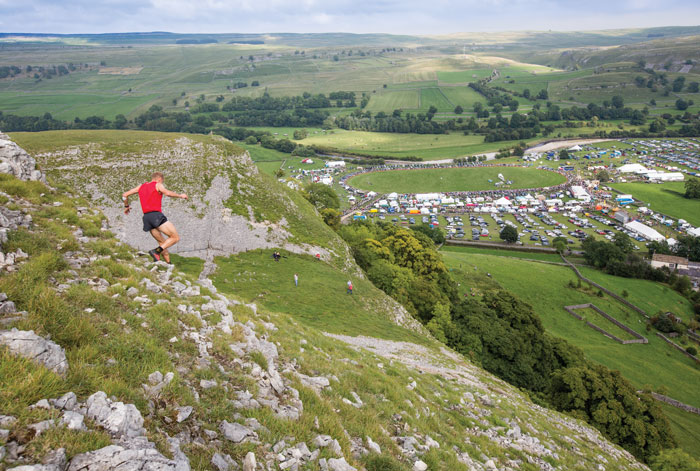
The best images from the website are being brought together for a Run the Dales photographic exhibition which opens at the Grade I listed The Folly Museum in Settle on May 18th, before travelling to the acclaimed Dales Countryside Museum in Hawes, with a smaller version also featuring at the redeveloped Skipton Town Hall. The exhibition at The Folly will also incorporate a retrospective of fell running ‘through the ages’ by writer Victoria Benn, author of new book Peak Performance chronicling the great sporting legacy of Ingleborough and the Yorkshire Dales’ Three Peaks. For further information visit:
www.runthedales.org.uk www.thefolly.org.uk www.dalescountrysidemuseum.org.uk
